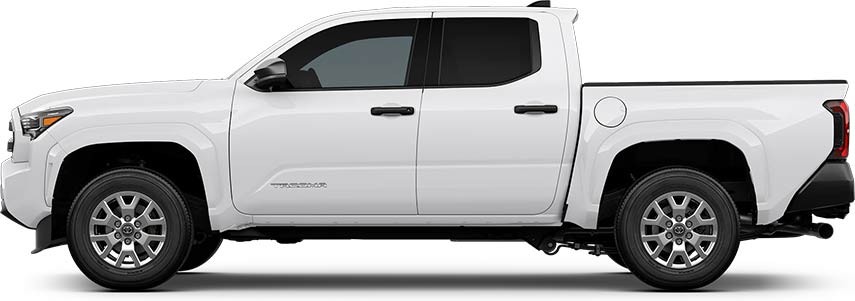When considering purchasing a truck or upgrading your current one, understanding Standard Truck Bed Dimensions is crucial. The truck bed is the workhorse of your vehicle, and its size dictates what you can haul, how you can organize your cargo, and ultimately, the truck’s overall utility. While there isn’t a single, universally “standard” size, this article will break down the most common dimensions you’ll encounter, helping you make an informed decision for your needs.
Decoding Common Truck Bed Sizes
Truck beds come in various sizes, primarily categorized by length. Manufacturers offer different bed lengths to cater to diverse needs and truck configurations. The most frequently seen sizes are often referred to as short, standard, and long beds. Let’s delve into what these terms typically mean in terms of dimensions.
The “Standard” Truck Bed: A Closer Look (6’5″)
The term “standard truck bed” most often refers to a bed length of approximately six feet and five inches (6’5″). This size has become increasingly common on modern full-size pickup trucks, especially those with crew cabs. Crew cabs, offering spacious back seats and four full-sized doors, have gained immense popularity for their passenger comfort and family-friendly functionality. To accommodate these larger cabs without making the overall vehicle excessively long, manufacturers often pair them with a 6’5″ bed.
Truck models frequently equipped with this standard 6’5″ bed include:
- Ram 1500
- Ford F-150
- Chevrolet Silverado 1500
- Toyota Tundra
It’s important to note that while 6’5″ is widely considered “standard” in today’s market, especially for crew cab models, the definition of “standard” can be somewhat fluid and model-dependent.
Exploring Short Bed Options (5’5” – 5’8”)
Shorter truck beds, typically ranging from five feet five inches to five feet eight inches (5’5″ – 5’8″), are primarily found on mid-size pickup trucks. These trucks, like the Toyota Tacoma, Ford Ranger, Chevrolet Colorado, and Jeep Gladiator, are designed to be more maneuverable and often appeal to drivers who prioritize city driving and off-road capability alongside some hauling capacity.
The trend towards shorter beds in mid-size trucks is also linked to the popularity of crew cabs. Similar to full-size trucks, mid-size pickups increasingly feature crew cab configurations, leading to shorter bed lengths to maintain a manageable vehicle footprint. Historically, older compact pickups with two-door cabs often had beds closer to six feet three inches.
Despite their shorter length, these beds are still versatile enough for many tasks, easily handling items like camping gear, sports equipment, and home improvement supplies. The advantage of a short bed is enhanced maneuverability, particularly in parking lots and urban environments.
Long Bed Dimensions: Maximizing Cargo Space (7’0” & 8’0”)
For those needing maximum cargo-carrying capacity, long beds are the answer. There are generally two categories of long beds:
- Standard Long Bed (7’0”): Often found on full-size trucks in extended cab configurations.
- Extended Long Bed (8’0”): Primarily offered on heavy-duty (HD) trucks.
Eight-foot beds are most commonly associated with heavy-duty trucks like the Ford F-250 and F-350, Ram 2500 and 3500, and Chevrolet Silverado 2500 and 3500. These trucks are built for demanding work in industries like construction, farming, and landscaping, where hauling large and long items is a daily necessity.
While long bed trucks excel in cargo capacity, their extended length can make them less agile in tight spaces and everyday driving situations. However, for professionals and individuals who regularly transport lengthy materials like lumber, plywood, or pipes, the extra bed space is invaluable.
Beyond the “Standard”: Exploring Other Truck Bed Sizes
While 6’5″, 5’5″-5’8″, 7’0″, and 8’0″ are the most common standard truck bed dimensions, the automotive landscape includes trucks with more unique bed sizes. Compact trucks like the Hyundai Santa Cruz and Ford Maverick feature beds around four feet to four feet five inches long. Electric trucks like the Rivian R1T also utilize beds in this shorter range, demonstrating that bed dimensions are evolving alongside vehicle design and intended use.
Furthermore, delving into older truck models reveals a wider array of bed sizes, influenced by cab configurations and evolving design philosophies. Classic trucks with single or extended cabs often featured different bed proportions compared to today’s crew cab-centric market.
The Shift Towards Shorter Truck Beds: Why the Change?
The increasing prevalence of shorter truck beds, particularly the 6’5″ “standard” and even shorter options, is directly linked to the surging popularity of crew cab trucks. Modern truck buyers often prioritize passenger space and the versatility of a four-door cab over the maximum cargo bed length. Trucks are increasingly used as daily drivers, family vehicles, and for recreational activities, not solely as work vehicles.
Models like the Ford F-150, while still capable workhorses, are frequently used for commuting, off-roading, towing trailers, and camping. The need to regularly haul 4′ x 8′ sheets of plywood has become less central for many truck owners. This shift in usage has driven manufacturers to prioritize cab space and maneuverability, resulting in shorter bed lengths becoming the norm, especially in the light-duty segment. Long beds have largely become the domain of heavy-duty trucks designed for specialized commercial and heavy-duty applications.
Selecting the Right Truck Bed Size for Your Needs
Choosing the appropriate standard truck bed dimensions (or alternative size) ultimately depends on your individual needs and how you intend to use your truck.
- For everyday use and occasional hauling: A short bed or the 6’5″ “standard” bed on a mid-size or full-size truck is often sufficient. These beds can handle most common items, and bed extenders are available for occasional longer loads.
- For enhanced maneuverability and off-roading: Short beds offer an advantage in tight spaces and on trails.
- For work and frequent hauling of long items: A standard long bed (7’0″) or extended long bed (8’0″) is likely necessary.
Remember that longer beds reduce a truck’s maneuverability, but are essential for those who regularly transport lengthy cargo. Regardless of the truck bed size you choose, protecting your investment with a quality truck bed liner is vital. DualLiner bed liners are renowned for providing superior protection and easy installation, ensuring your truck bed remains in top condition for years to come.
[


